The TCL C835 Mini-LED TV is the premium mini-LED offering from TCL. Available in 55/65/75” for $1999/2999/3999, it offers great colours, performance, and sound compared to its QLED and QUHD cousins.
Let’s start with the tech. Mini-LED is brighter and has a denser backlight system behind an LCD panel. Tens of thousands of mini-LEDs (actual numbers not revealed, but it has 240/288/360 controllable dimming zones) shine through a Quantum Dot (QLED) colour enhancement layer and then through an LCD TV panel.
The result is an order of magnitude more brightness than a Full-Array LED backlight (FALD) or Edge-lit backlight LCD. The QLED layer amps up the colours, and the LCD layer controls sub-miniature gates that let the light through. You can learn more Confused about TV tech? That’s just what they want! (guide).
Many advertisements and publications claim mini-LED is an OLED killer. That is just marketing rubbish. 4K OLED has 8,294,400 self-emissive pixels (light bulbs) that can individually turn on or off, producing true black and true white. Until the new LG evo panels (in the 2022 C2 and G2 ranges), mini-LED had the brightness advantage suited for large open plan Aussie lounge rooms. But OLED had the advantage in everything else.
In order of image quality
- OLED is the undisputed king of TV/Movies. It decodes Dolby Vision (DV)/IQ and gives close to 100% HDR/10/+/DV (high dynamic range) results.
- Mini-LED/QD/LCD is bright and colourful. QD (Quantum Dot) gives good, saturated colours. It decodes DV. The ones we have seen are about 80-85% of OLED HDR capabilities
- Full-Array Local Dimming (FALD) backlit LCD will give you a better image than Direct-Lit or Edge-Lit LCD. These may decode DV with the result that is closer to 60-70% of OLED HDR.
- Direct LED (see below for details). These may decode DV with the result that is closer to 40-50% of OLED HDR
- Edge-Lit is what 90% of consumers buy because they are cheap. These may claim DV but what you see is only about 20-30% of OLED HDR.
And it is probably a little unfair to TCL because the last TV we reviewed is the LG C2 OLED evo TV – advanced OLED at a more affordable price (review). While mini-LED is the best LCD TV technology, there is a visible difference side-by-side. TCL is good, very good, but LG C2 is excellent.
But then it is all about bang for buck. If you can’t afford OLED, this is an eminently watchable substitute.
Australian review: TCL C835 Mini-LED TV (specs based on 55” model as tested)
Note: We have updated all specs to reflect Australian electricity at 50Hz. What this means is that a 60/120Hz panel operates at 50/100Hz. TCL websites still show refresh speeds based on 60Hz power.
| Website | Product Page and Manual |
| Price | 55/65/75” for $1999/2999/3999 |
| From | Harvey Norman, JB-Hi Fi, Good Guys, Bing Lee |
| Warranty | 3-years ACL |
| Country of origin | China |
| Company | TCL Technology (originally an abbreviation for Telephone Communication Limited) is a Chinese electronics company headquartered in Huizhou, Guangdong Province. It designs, develops, manufactures, and sells consumer products, including television sets, mobile phones, air conditioners, washing machines, refrigerators, and small electrical appliances. |
| More | CyberShack TCL news and reviews |
We use Fail (below expectations), Pass (meets expectations) and Exceed (surpasses expectations or is the class leader) against many of the items below. We occasionally give a Pass ‘+’ rating to show it is good but does not quite make it to Exceed.
First impression – The TCL C835 Mini-LED TV is well made – Exceed
Mini-LED is a backlight type, so the panel is slightly thicker (30mm) to accommodate that. It has very narrow top and side bezels and a solid black aluminium edge. The rear is well-finished with power on the left and all ports on the right. The centre pedestal stand is height-adjustable to accommodate larger sound bars (no troublesome side legs). A power button is well hidden and can turn it on/off and bring up a basic on-screen start menu.
Its IR/Bluetooth remote control is logical and has dedicated buttons for Netflix, Stan, Prime Video, Disney+, YouTube and TCL Channel. It is not backlit.
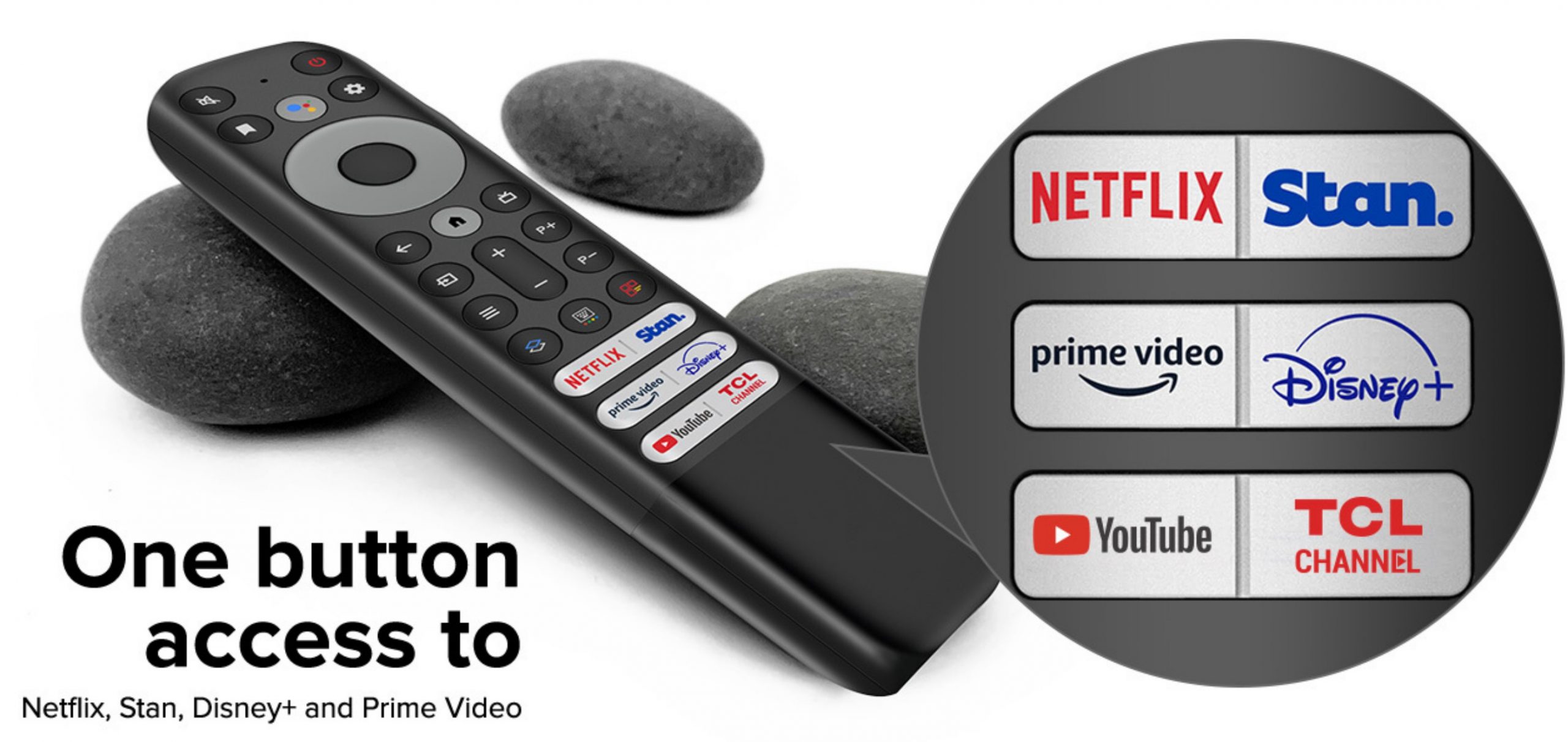
Setup – Google/Android TV 11 – Exceed
Google/Android 11 TV is easy to use. Log in via your Gmail account, set up Wi-Fi (or ethernet), and agree to sign your privacy away (all TV brands now want to know everything). TCL also wants you to sign in for TCL added-value features, and you can’t avoid it. If you want privacy, set up a junk Gmail account.
We won’t go into Android TV 11 except to say that it has all Australian digital free-to-air channels and a vast array of apps. It also uses Google Assistant to allow for Google Home and voice control. A nice feature is Chromecast support, but PCs will need to use a Miracast dongle.
A dedicated TCL channel comprises live channels plus hundreds of on-demand shows.

Tests
From July 2022 we have invested in testing equipment that allows us to direct screen grab instead of photographing the screen. The result is a more accurate representation of the test results.

Image quality – Vivid mode Exceed
Out-of-the-box, its colours are a little off – washed-out and not natural. There are pre-sets for Vivid, Low Power, Smart HDR, Sports, Movie, Game, and PC, and it defaulted to Low Power mode. This is OK at night, but you want to select Vivid (highest power mode) for normal daylight viewing. Our tests use this.
It reproduces 1.07 billion 10-bit colours. Our tests’ primary colours, red, green, and blue (RGB), were 100% accurate. Secondary and tertiary colours (like skin tones) were mostly accurate. It has about 93% DCI-P3 gamut support on Vivid/Smart HDR settings.
Subjectively the LG C2 OLED colours are more saturated without being overly vivid, but not appreciably so until you see these side-by-side.
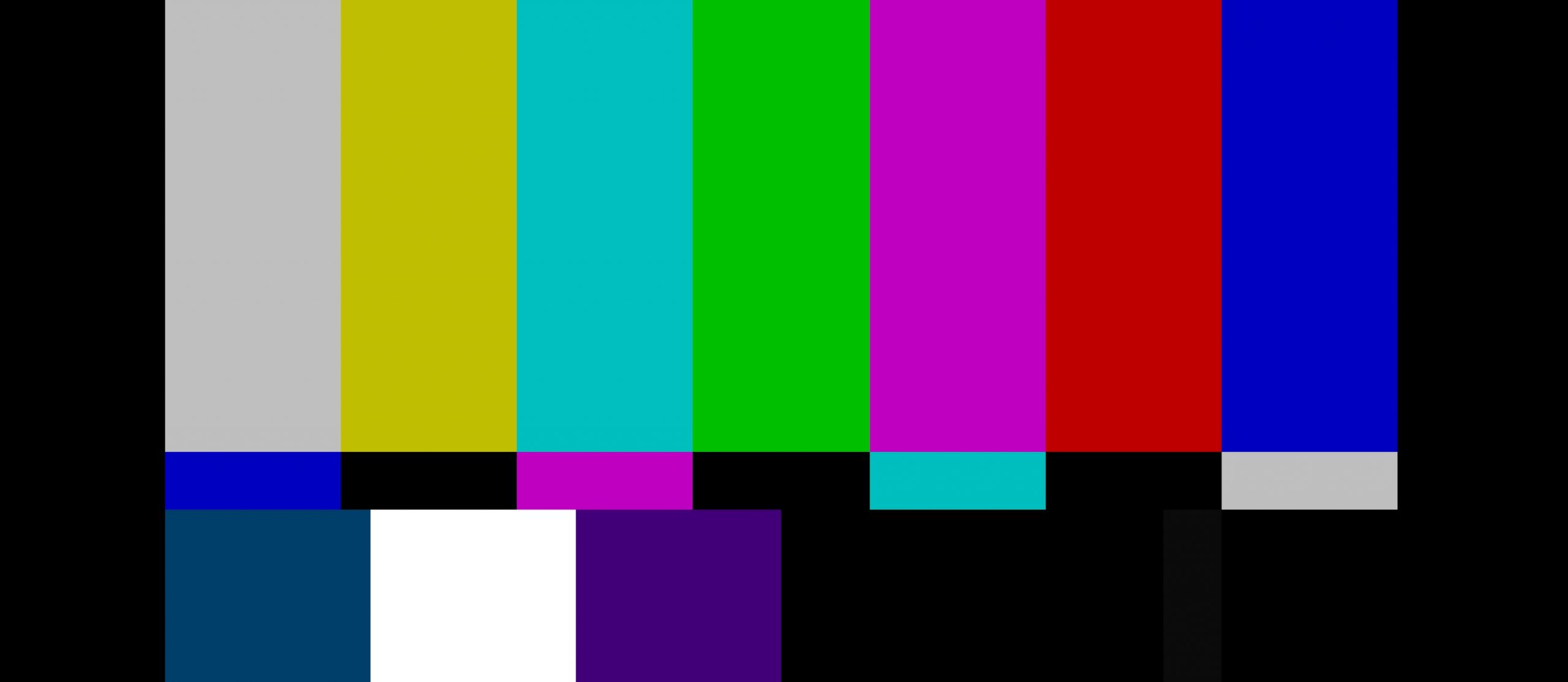



Contrast – Pass+
The contrast is 6000:1 – the difference between its whitest white and blackest black. By comparison, OLEDs are infinite ∞:1, and most LCD TVs are around 1000 to 1500:1 as you never see pure black (only OLED can turn each pixel on/off).


So, this is pretty good, and you can see the 1% increments in the test. While it does not produce inky blacks like OLED, it is way ahead of any other recent QLED/UHD TV we have tested.
Brightness – Pass+
Out-of-the-box, its brightness was not good. There are pre-sets for Off/ECO/Brightness+, and like the colours, you need to go from Eco (default) to Brightness+ (at least in a bright room). Our tests use this.
The panel is rated at 500 nits maximum brightness over 100% of the panel. Our tests confirm that it reaches between 400-500nits, so it can easily display SDR (standard dynamic range) free-to-air and FHD streaming.
The next step is HDR10, which needs at least 1000 nits in a small portion of the screen. This TV passes that test in a 20% window.
Dolby Vision IQ (adjusts brightness and gamma to ambient light levels) can be up to 10,000 nits (but no TV does this). On the Brightness+ setting, it can reach 1500 nits in a tiny part of the screen, but that is where a darkened room can make it look much better. Our tests show it can sustain 1000 nits in a 2% window.

HDR/10/+/HLG – Pass+
As it can do Dolby Vision, it can easily do the subset of HDR up to HDR10+. We found the colours, details in highlights and shadows and tones pleasing, although not quite to OLED standards.




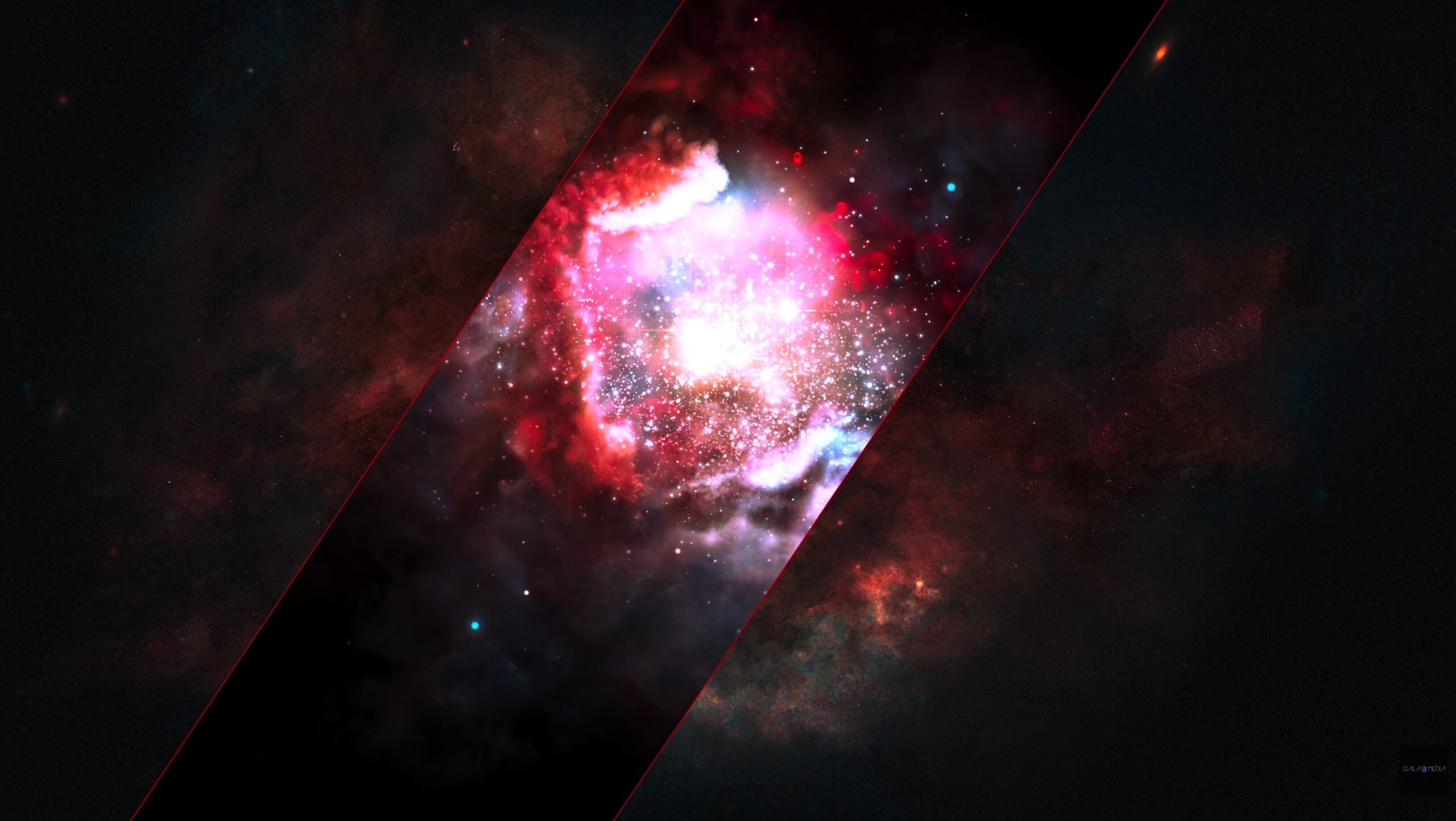

Motion Smoothing – Pass
While it claims to have up to 200 clear motion rates (that is not Hz), the panel is native 100Hz. It adds BFI (black frame insertion) between actual frames. We noticed some tearing above 100fps (Hz), and the judder test shows the image breaking up. Don’t worry – you cannot see that with your eyes.

Off-angle viewing – Pass(able)
Unlike OLED, where you can get close to a 180° angle to the screen, this VA LCD panel tends to wash out colours and details past about 135°. All this means is that you need to be a little more front-on in viewing than off to the side.
Reflectivity – Pass
The screen is quite reflective, particularly for off-angle viewing. It is best to have reasonable ambient light control (curtains) to control the light from the sides and rear of the viewing position.

Sharpness – Pass+
The text is crisp. But it fails the Moire test, where moving white text is overlaid on black text with a fair degree of tearing as it passes over the gaps between the dimming zones. This is not a critical test but shows that light control on mini-LED cannot match OLED.


Upscale – Pass+
All video content is intelligently upscaled to 4K. It uses a deep learning AI that recognises a range of objects and helps to predict what the frame should be. We tested from 480 to 10-80p content, and it was excellent.
Connectivity – Pass+
- Wi-Fi 6 AX dual-band (needs a Wi-Fi 6 AX full-duplex router, or it reverts to half-duplex Wi-Fi 5 AC) or Gigabit ethernet
- Bluetooth 5.2 (latest)
- HDMI 2.1 eARC 2.0 4K@60Hz – not eh full HDMI 2.1 implementation, e.g., not 120Hz/VRR/ALLM/QMS, so make sure you do not plug other devices into a soundbar
- 1 x HDMI 2.1 4K@144Hz 48Gbps
- HDMI 2.1 4K@120Hz
- HDMI 1.4b 4K@60Hz
- 2 x USB-A 2.0 5V/.5A/2.5W (only for playback – cannot be used for recording)
- AV out
- Optical audio out
- 3.5mm Headphone
- RF antenna for a single tuner
While HDMI 2.1 eARC 4K@60Hz is sufficient to pass through uncompressed Dolby Atmos to the soundbar, it is not enough to pass Dolby Vision up to the TV. Plug any external content devices directly into the TV.
We are a little disappointed that while it has 4 HDMI ports, only two are the full implementations of the 2.1 standards.
If you only have Wi-Fi 5 AC (or earlier), you may get 4K streaming issues. It works beautifully on a Wi-Fi 6 AX router.
The USB-A ports are only 2.5W, which is enough for keyboard/trackpad and flash drives but too low for external SSD drives or Google/Fire TV dongles.
Gamers – Pass
Having 1 x HDMI 2.1 4K@144Hz (this only works at 144Hz on PCs – not games consoles) and 1 x HDMI 2.1 4K@120Hz (100Hz AU consoles) ports means you can direct connect Xbox X and PlayStation 5 consoles. We did not test this, but these ports support ALLM, VRR, and FreeSync premium. It does not support HGiG.
The panel is rated for up to 144Hz (only with a recent PC), but it is a 100Hz panel that tends to judder when pushed harder.
The panel has a 6.5m2 G-t-G response time in Game Mode (Game Bar). You should be able to play cloud games via a BT-connected controller.
Voice control – Pass+
It can support Google Assistant (dedicated mic button on the remote). Alexa and Siri (HomeKit/Airplay 2) require an external smartphone or speaker.
Sound – Pass(able)
We had such high hopes for this 2.1 40W (2x10W +1 x 20W) Onkyo tuned system. Regrettably, Onkyo has recently filed for bankruptcy after being delisted from the Tokyo stock exchange. This does not affect the quality; the name will live on licensed to Sharp (Foxconn) and Voxx.
To be blunt, the sound out of the box is not good. Its pre-sets include Standard/Movie/Music/Voice/
Game/Sports/Dynamic and a bass enhancer has On/Low/Middle/High pre-sets. I really can’t recommend any of the pre-sets because, in our tests, they made little difference. For example, the Voice pre-set should recess bass, emphasise 1-4kHz mid, and recess treble – only it does not. For most use, Dynamic is the best choice.
The maximum volume is a respectable 84dB. As expected from two down-fixing TV speakers, the sound stage from a 2.1 system is very front and forward-focused. The Sub-woofer points backwards, and that would be an issue if wall-mounted.
It will decode PCM mono-5.0 and Dolby Digital formats (up to 5.1), DTS formats and Dolby Atmos. Invariably these all come out as 3.1.
Now to Dolby Atmos
All this means is when the TV encounters Dolby Vision and Atmos (DA) metadata, it decodes the 128 channels to the TV’s three channels. You do not get 3D spatial height nor surround – just a slightly wider sound stage. If you want the full DA effect, you need a DA soundbar. We will be testing the TCL 8132 3.1.2 DA soundbar separately, but hint; you need a soundbar to enjoy clear and immersive sound from this TV.
Read How to buy a soundbar that meets your needs? (guide) and Five tips for better TV sound – Dolby Atmos for beginners (guide)
With all the pre-sets adjusted properly (we usually test on default settings), bass starts at about 50Hz and builds very slowly up to 300hz (high-mid) before flattening to 6kHz (then a dip to avoid harshness) but the mid-and-upper-treble drops off fairly quickly.

In addition, frequencies from 1khz upwards are somewhat choppy, indicating the speaker has to clip or compress the sound, and there is distortion. The result is that bass is recessed (no ‘oomph’), mid is flat, but a little choppy (muddy) and treble seems dull. There is very little ‘directionality’ to the sound.
It is more an Analytical signature (bass/mid recessed; treble boosted) – crisp but not pleasant for most music. You can read more about sound and how we test How to tell if you have good music (a sound signature is the key – guide.
Mounting – Exceed
It uses a standard VESA 400x 400 with M6 thread, so you can choose from a vast range of third-party mounts.
The desktop pedestal mount is very well designed and allows for a moderate height adjustment to accommodate larger soundbars.
The unit is 1446.6 (W) x 827.2 (H) x 68.5/319mm (D) x 23/26kg without/with the stand.
Power – Pass
It has a 3-star rating. We measured an average of 100W and up to 250W at times with Dolby Vision content. At 30 cents per kWh, it is only a few cents per hour. In standby, it draws .5W.
CyberShack’s view – Is the TCL C835 Mini-LED TV worth it? Yes
After completing a review, we check other reviews to see if we have missed anything or are at odds with their findings. We are at odds with some significant results that appear to be untested and regurgitated from press releases or other less-informed reviews. We must be objective and use a broad range of test software and reference images.
At odds, are references to mesmerising sound (it is not), brightness levels of 1500 nits (barely if at all), pre-set defaults out of the box are perfect (not for bright Aussie lounges), and raves about the 144Hz screen (it 100Hz and only 144Hz with noticeable tearing when used with a recent, powerful PC).
In accord with our findings, motion smoothing is not great (turn it off); it does not measure up to OLED and is excellent value.
I have seen several mini-LED brands and models now, and the short answer is that they have the best image/brightness that any QLED/LCD-based TV can produce. But side-by-side, the LG C2 OLED is better – its colours are authentic, its blacks inky, it is now bright enough for Aussie lounge rooms, and the image depth is more immersive.
2022 Competition (prices are RRP and ignore 2021 run-out stock)
The answer comes down to price. Given that the TCL 65” RRP is $2999, and the LG C2 OLED is $4499 (not an apple with apple comparison), the answer is a resounding win to TCL if that is all you want to spend. Of course, RRP is a rubbery figure, and the LG is on special (as we write) for $3490, so the $500 extra is money well spent.
LG has the mini-LED QNED80 and QNED85 models I saw at a recent launch LG 2022 TV range – good, better, best and superlative. The 65” is $2576/3376 respectively, and the QNED85 has better specifications than the TCL C835 Mini-LED TV.
Hisense has the U9G mini-LED series in 65/75” for $2499/3499. I reviewed the 2020 previous model, which was generally a good performer. The 2022 series has 1000+ local dimming zones compared to 288 for the TCL C835 Mini-LED TV – that makes little difference visually. The biggest drawback is that the Hisense’s HDMI ports only support 4K@60Hz, so gamers will not be interested. Hisense Australian 2022 TV range – huge!
Sony has the X95K mini-LED (not here yet and no price), but its closest match is the LG QN85.
Samsung has mini-LED, but as it does not support Dolby Vision, there is no direct comparison.
TCL C835 Mini-LED TV, TCL C835 Mini-LED TV
CyberShack Verdict
TCL C835 Mini-LED TV
55/65/75” for $1999/2999/3999







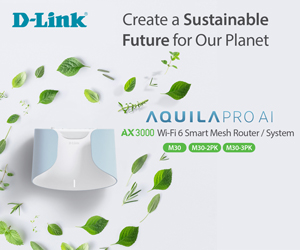



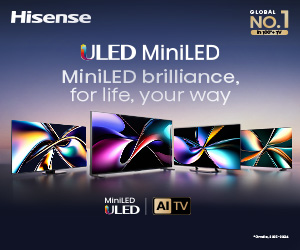

18 comments
Max
You guys left out testing the actual usage of this tv with its main modern day functions of streaming apps available for this tv to stream content.
This matters because when I tested this TV using apps like Plex or Emby or even Apple+ streaming with Atmos, the tv fails completely with Atmos audio being choppy and noisy.
Dolby Vision content using Plex or Emby fails completely and would only be recognised as 1080p or standard HDR content.
So the software firmware for this TV is not up to par, NOT all Android TV implementations are the same even if they are on the same Android TV version (in this case Android TV 11), alot of reviewers fail to test this.
I say this is a firmware issue because on the same Android TV 11, the NVIDIA Shield TV Pro device plays these same content properly. After debugging a little bit I can see that the firmware on the TCL Android TV UI does not expose display modes higher then 1080p@60hz for this tv if using the streaming apps installed on the tv.
Ray Shaw
Hi MAx
Interesting point. we cover that in Android TV and if it has any major streaming channel omissions. Tell me what you would like to see, and we will try to incorporate it into future reviews.
Trifi
But side-by-side, the LG C2 OLED is better – its colours are authentic, its blacks inky, it is now bright enough for Aussie lounge rooms (200 cd/m² 100% window sustained)
At odds, are references to mesmerising sound (it is not), brightness levels of 1500 nits (barely if at all), pre-set defaults out of the box are perfect (not for bright Aussie lounges) 500 cd/m² 100% window sustained.
So how is the oled which is not even half as bright good enough for Aussie’s lounges but the mini led isn’t? Also most of the times the oled can only reach half of the max brightness the mini led can. I’m just curious, and trying to understand.
Ray Shaw
Hi TriFi – thanks for your question, as it is one that potential mini-LED and OLED buyers struggle with. Aussie Lounges tend to range from 400-500 lux (office light) to over 1000 lux (sunlight through windows but not on the TV). 1 lux is 1 lumen per m2. So any TV that can average 400+ nits (cd/m2) can defeat all bar the brighter loungerooms. The 2022 C2 and G2 OLED average over 400 nits and can reach over 1000 nits to qualify for Dolby Vision. But the second component is the black level. OLED is pure inky black (infinite:1 contrast), and mini-LED is not. It is better than FALD/Direct/Edge-lit, but blacks are (as in the TCL C835) about 6000:1.
The short answer is that side-by-side OLED has better colour, better gamut and a more authentic, pleasing image. Mini-LED looks a little harsher, the colours are over-saturated, there is some blooming, and the contrast is lower.
This brings us to the fact that only an expert can tell. The TCL Mini-LED C835 is a pretty impressive TV. The LG QNED91 mini-LED is even better. If I were buying for the Aussie Lounge, I would choose Mini-LED. As it is, I have well-controlled light in my TV viewing area, and my three-year-old SONY Mater OLED is perfect there.
FU
Your reviews are trash!
Ray Shaw
What an easy way to trash a review. Others think is it really good. If you care to elaborate perhaps we can improve it to your expectations.
Christophe
Hi, thank you for this brilliant and detailed review (exceed).
You made a review of the LG QNED91 in 2021 : https://cybershack.com.au/reviews/lg-qned91-a-superb-4k-miniled-tv-review/
Now that both TVs (the 2022 C835 TCL and the 2021 QNED91 LG) are in the same price range, and since you are familiar with both TVs, what would be your advice and opinion if I had to choose between them ?
(UHD movie fan, using TV in darkened rooms). My concern is that TCL has no filmmaker mode (LG has), but is this necessary ? (and also is there a real difference in the motion smoothing : is it better in the LG than in the TCL ?)
Thanks a lot
Ray Shaw
I have replied via email to this. Cheers
Pogma
Hi.
Did it properly display DVD content?
Apparently last year’s models couldn’t properly display 480p/576p.
Ray Shaw
The C835 displayed DV content very well. It was not quite up there with LG OLED evo but it was more than acceptable. Upscaling tests were from 480, 720-1080p and they were good. 480p is a push for any upscale, and we allow some leeway for soft edges. We did not test on 576p but I think the AI could handle it.
Auden
When will you review the C935?
Ray Shaw
We are reviewing the 730 now and the 935 in a few weeks – say mid-September.
RMc_GC
How can they market this as supporting 120hz (or even 144Hz for PCs) when according to you guys it has a 100Hz panel?
How does this even work for PS5 games like Spider-Man that output 120fps but it’s actually 40fps with each frame repeated 3 times (so still 120fps). Will there be screen tear?
Ray Shaw
Hi Richard
First Australian power is 50Hz (cycles), and many overseas countries use 60Hz. I have adjusted the review to accommodate this, e.g., 50/100Hz, not 60/120Hz and 120Hz, not 144Hz. It is a 100Hz panel
John
Shouldn’t you use Cinema mode since that’s most accurate and highly recommended? also you’re wrong about LED never achieving true black cause Samsung qn85b and qn90a/b can achieve true black even some scene in TCL can achieve true black(depending on the scene)
Ray Shaw
Hi John
I don’t doubt your belief, but regrettably, you’re mistaken. First to true black. True black means an infinite contrast ∞:1 because the difference between pure white and pure black is unmeasurable. Only OLED can do true black. Mini-LED cannot have true black because LCD gates still control the backlight and these let light through regardless of the backlight. Rtings https://www.rtings.com/tv/reviews/samsung/qn90b-qled measured Q90b contrast at a reasonably low 3284:1 (whole panel) and 19,937:1 for HDR10+ high brightness mode in a very small part of the screen. Black levels were 1.225%, so what may look black is not. The TCL C835 claims 6000:1 contrast, and while I take that figure with a grain of salt, it had far better contrast than a QLED. So blacks are not black until they reach 0%.
As for modes, TCL does not have a cinema mode – movie mode. The right mode for you depends on the amount of light in the room. We found movie mode was only good when the room was <40 lumens, like in a closed media room. Vivid was best for FTA TV during the day and LowPower at night.
RMc_GC
If this is actually a 100Hz panel, and I’m using my PS5 to play Spider-Man running at 120Hz to output 40fps (with 3 repeated frame), will this actually work smoothly, or will there be judder/screen tear?
— as opposed to “up-to-120fps”, which most of the time won’t hit that target.
The TV looks excellent apart from this potential deal-breaker!
Ray Shaw
Hi Richard. First Australian power is 50Hz (cycles), and many overseas countries use 60Hz. I have adjusted the review to accommodate this, e.g., 50/100Hz, not 60/120Hz and 120Hz, not 144Hz. It is a 100Hz panel; frankly, that is all you can get out of it regardless of what your PS5 indicates (likely 120Hz, but in reality, it is 100Hz). We are not sure how this TV gets 120/144Hz, but there is mention of DLG (dual line gate) technology being used. DLG basically amps the current to the dimming zones/LCD gates to give bursts of a higher refresh. As far as I can see, it is not really effective.
Now to judder and screen tear. The new test equipment we use can capture a single frame or a set of 25/30/50 frames per second, and that is why you can see tearing and judder in the review that is otherwise invisible to our eyes. My guess is that the PS5 will play nicely with this using the 100/120Hz HDMI 2.1 input. If in doubt, take the PS5 to the TV retailer and try it.